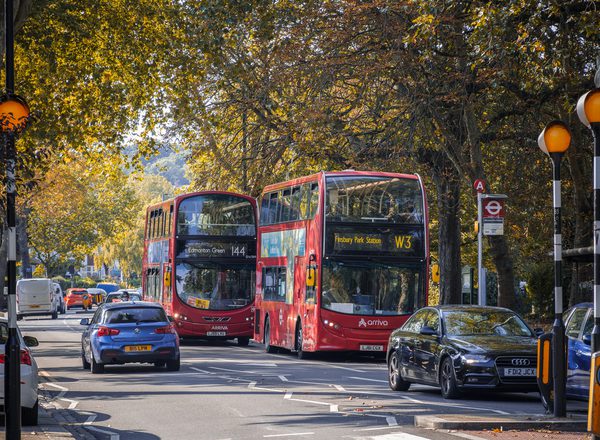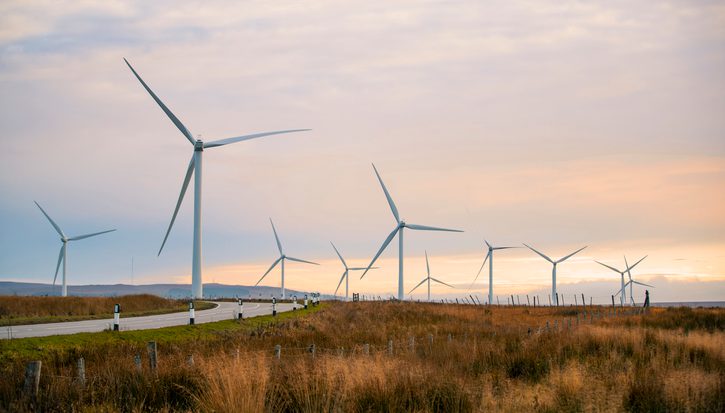
Fairer is faster: The route to greener and healthier domestic transport
Article
The government can speed up efforts to decarbonise transport by targeting the highest emitters.
Electrifying road transport has put the UK on the path to lower transport emissions for the first time. However, a gap remains between government policy and the Climate Change Committee’s advice on the reductions needed this decade. Here, we show how the best approach to accelerating emissions cuts from transport is prioritising fairness – putting the emphasis for behaviour change on those who emit the most and investing in providing more transport options to those on the lowest income.
After inheriting a net zero strategy deemed insufficient by the courts, the Labour government have until the end of October to publish their approach to reducing emissions in-line with the UK’s climate goals. Transport is the highest emitting sector and almost 30 per cent of emission savings are due to come from surface transport between now and 2030. Yet the previous government’s transport decarbonisation plan was not up to the task and there is a well-known policy gap in achieving what’s needed.
Although the last government bears significant responsibility for its inadequate approach, the problems with how transport policy is developed are longstanding. Decisions based on predictions of future travel trends have dominated where a vision and political direction are needed. This inertia is further compounded by a bias towards certain travellers and journeys. Commuters’ time is valued higher than those making other journeys, for example for caring responsibilities, and car drivers’ time is worth more than that of bus passengers. There remains a reluctance to disrupt the status quo, no matter the benefits change may deliver.
There remains a reluctance to disrupt the status quo, no matter the benefits change may deliver
This lack of urgency has been felt in people’s lives, not just in the historically slow pace of emission reductions. There is a stark divide in people’s experience of getting around, with some having effectively unlimited ability to travel how, when and where they like, whilst millions face transport related social exclusion and are unable to access community life or jobs. Moving faster to shift the UK away from its dependence on fossil-fuelled vehicles would provide healthier places to live, safer streets, lower congestion, more inclusive local economies and make transport work better for low income households.
This is not to ignore where progress is being made. Electric vehicles have reached an important tipping point, becoming more affordable, the charging network has expanded, people feel positively towards them. Ditching fossil-fuelled cars will also lead to savings for a typical car-owning household of around £550 a year.
However, electrification is not the answer to inequality in transport access in the UK. Those who can’t afford a fossil-fuelled car today won’t be able to afford an electric vehicle. Electric cars won’t stop traffic jams or make roads any safer. We need to reduce car dependency and free up road space for more affordable, efficient and healthier transport modes.
The best way to address transport’s emissions gap is to place a renewed focus on equity
Raising the cost for the most polluting travel behaviours and reallocating road space away from private cars to public transport and active travel can provoke vocal opposition. IPPR’s recent research shows the political risk of this are often overestimated and the scale of opposition can be mitigated if policies are effective, fair and communicated with genuine empathy.
The best way to address transport’s emissions gap is to place a renewed focus on equity. In our new report, described in brief below, we consider the impact of three different pathways on the pace of emissions reductions, transport inequality and traffic in the UK.
Methodology
We devised three scenarios and then assessed their implications on travel behaviours in the UK.
- Baseline: Based on the polices inherited from the previous government’s Net Zero Strategy and Transport Decarbonisation Plan; updated to reflect the latest changes to the Zero Emission Vehicle mandate. This pathway relies heavily on the rollout of electric vehicles with no target for modal shift or demand reduction.
- Balanced pathway: Based on the policy recommendations and emission reduction trajectory contained in the Climate Change Committee’s Seventh Carbon Budget advice. This includes faster rollout of electric vehicles and sustainable aviation fuels, modal shift and some reduction in flights.
- Fairer pathway: IPPR’s indicative scenario. Places more emphasis on demand reduction and modal shift, bringing down excess flying and car use whilst boosting the mobility of the lowest income groups through increasing access to sustainable, affordable transport options. Assumptions of climate technology uptake are the same as the balanced pathway.
A qualitative assessment has been made of the likely impact of both existing policies and the Climate Change Committee’s advice on different groups in society.
Fairer is faster and healthier
The government needs to accelerate its approach to transport decarbonisation (see figure 1). Our analysis finds a significant emissions gap of around 4.8 MtCO2 in 2030 between that achieved through existing policy versus the balanced pathway. A fairer pathway outstrips both. Under an equitable scenario, emissions from domestic travel would be 12 MtCO2 lower in 2030, as it does not rely as heavily on the rollout of new zero emission vehicles.
At the start of 2024 the highest emitting and wealthiest group in the UK produced 10 times more emissions from their domestic travel than the lowest emitting. Under the baseline scenario, this risks increasing to 13 times greater by 2035, driven by the assumption of ever-increasing travel contained in current transport decarbonisation policy. The balanced pathway mitigates this by allowing for some modal shift and reductions in flying but is still based on the same questionable assumption. As shown in figure 2, using the example of three of the transport profiles identified in our research, the fairer pathway means:
- more mobility options being provided to those on the lowest income seeing the distance they travel each year increase by 10 per cent by 2035
- average travellers change how they get around but the overall distance travelled each year not increasing
- reductions in excess car use and flying by the highest emitters seeing the distance they travel drop by 27 per cent, although the members of this affluent group still remain the most mobile and highest emitting.
A fairer approach would mean a change everyone notices: fewer cars on the road (see figure 3). Existing policy is predicted to lead to a 12 per cent rise in traffic by 2035 and, despite allowing for some mode shift, the balanced pathway could see still see a five per cent rise. These figures come with a healthy amount of uncertainty as the extent to which people may drive electric vehicles more and further, due to their lower running costs, is still unknown. Meanwhile, a fairer pathway would see traffic reduced by 25 per cent over that same period.
Recommendations
There is no single policy change that can deliver the accelerated path to green transport captured in our fairer pathway. A new policy framework for achieving equitable demand reduction would provide genuine transport choices for those currently forced into car dependency or locked out of car ownership altogether, whilst asking those with the most resources and ability to adapt to change first and faster.
We recommend this is reflected in the government’s climate plans through the following commitments.
- Establishing a sectoral emissions reductions target for transport to ensure the sector is contributing its share of the government’s economy-wide target of at least 81 per cent reductions by 2035 on 1990 levels. A 71 per cent reduction from domestic transport could be achieved following the fairer pathway compared to 55 per cent under existing policy.
- Setting a modal shift target for a 10 per cent shift from cars to public transport and active travel by 2035 with a linked goal of reducing levels of private vehicle traffic by 25 per cent.
- Producing a public engagement strategy for sustainable travel. This should provide meaningful opportunities for people to shape the future of transport, starting with a UK-wide citizens’ jury on the future of motoring taxation.
- Better accounting for the environmental and social costs of transport by raising fuel duty, increasing VED on oversized, high polluting SUVs and increasing taxes on private jets and domestic flights. Funds raised from these changes should be earmarked for investment in providing sustainable and affordable transport alternatives.
- A moratorium on major road expansion projects and increases in airport capacity.
Related items

A people-focussed future for transport in England
Our findings from three roundtables on the impact of transport in people’s lives and the priorities for change.
The sixth carbon budget: The first plan without consensus
For decades, UK climate action was cross-party, and consensus meant policy looked different to politically competitive issues like tax.
Skills passports: An essential part of a fair transition
This month, government will publish its Clean Energy Workforce Strategy. This plan covers two aims. First, filling the growing demand for skills in clean energy industries is essential to keep on track to reach the government’s clean power…